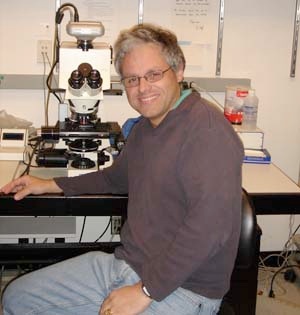Although PWS is best known for hypothalamic obesity and hyperphagia, the cognitive and behavioral issues are the most challenging for families. Previous neuroanatomical studies in PWS have examined cells in the hypothalamus. To date, no data are available on the cellular structure of the brain in PWS in the frontal lobe where executive function for decision-making, sensory perception and social behavior reside. In year one of this proposal, we are investigating the size and number of a modified type of pyramidal cell, the von Economo neuron (VEN), as well as pyramidal neurons in post mortem brains of persons with PWS. VENs are found typically in greater numbers in the right hemisphere of the brain in the anterior cingulate cortex (ACC) and frontoinsular (FI) cortex. VENs are believed to be responsible for sensory awareness, social perception, problem-solving behavior, and maintaining a balance in the autonomic nervous system. The distribution of VENs is abnormal in the ACC and FI in disorders such as autism, schizophrenia, and frontotemporal dementia. VENs are found only in anthropoid primates, elephants, and cetaceans whose survival requires social communication; they cannot be studied in mouse models of PWS.
Through the generosity of families who lost a loved one with PWS, brains are available for study at the NIH NeuroBioBank. An oversight committee reviews each proposal to guarantee research qualifications, ethical standards and legal obligations. Our study was approved and 19 brains were released for study at Dr. Hof’s laboratory at the Department of Neuroscience, Icahn School of Medicine at Mount Sinai, New York. Clinical information was available for 11 of the brains. This aging cohort of individuals with PWS provides an opportunity to correlate psychiatric symptoms (depression, bipolar disorder, psychosis, and dementia) as a function of age and genetic subtype with data on VENs and pyramidal neurons. Although there was a sampling error among the insula specimens, our microscopic analysis revealed that VENs were present in the posterior insula, a finding unique to PWS brains. VENs were also found in the ACC; their number and cell volume were determined; and their ratio to pyramidal cells was calculated, allowing a comparison to ratios found in other neuropsychiatric conditions.
In this competitive renewal, additional tissue from the right hemisphere of the anterior insula and orbitofrontal cortex will be requested. Frozen tissue from the left hemisphere will be tested by methylation analysis and quantitative polymerase chain reaction to determine genetic subtype for correlation the neuroanatomical findings in PWS. The cellular expression of proteins affected in other neuropsychiatric disorders will be assessed in PWS. These results will enhance our understanding of the cause of the PWS phenotype and have an impact on the development of psychological as well as neurophysiological interventions for individuals with PWS in the future.
Research Outcomes: Project Summary
Our study is the first to focus on stereological assessment of neuronal distribution in the anterior cingulate cortex (ACC). Von Economo neurons (VENs) are long, spindle-shaped cells that are found in the ACC and the frontoinsular (FI) cortex. The distribution and density of VENs are affected in several neuropsychiatric disorders. We found increased density of VENs in layer V of the ACC in a small set of subjects with Prader-Willi syndrome (PWS) compared to controls. These were no changes in density or volume of pyramidal neurons in the same brain region. Increased number of VENs during development in PWS may correlate with the onset and intensity of temper tantrums, hyperphagia, autonomic instability and social salience. We are expanding our study to include more PWS cases as well as controls across the age-spectrum, to test whether this observation holds with age and indeed associates with clinical data and genetic subtypes. We also observed atypical distribution and oblique orientation of VENs in the posterior insular cortex. Our findings suggest that abnormal proliferation and migration of VENs may represent at least a partial cellular marker of the observed behavioral phenotypes. It is highly relevant to consider that abnormal distribution of VEN has been documented in brains from patients with autism and patients suffering from conditions that include autistic traits like agenesis of the corpus callosum. As PWS in some cases presents with autism-like behaviors further comparisons of VEN distribution and molecular phenotype, and of the structural organization of the ACC and FI across such disorders will be crucial to understand better the basis of the functional deficits of PWS.
Research Outcomes: Publications
Autism spectrum disorder: neuropathology and animal models. Varghese M, Keshav N, Jacot-Descombes S, Warda T, Wicinski B, Dickstein DL, Harony-Nicolas H, De Rubeis S, Drapeau E, Buxbaum JD, Hof PR. Acta Neuropathologica. 2017 Jun 5.
Funded Year:
2017
Awarded to:
Patrick Hof, MD
Amount:
$100,000
Institution:
Mount Sinai Icahn School of Medicine
Researcher:





